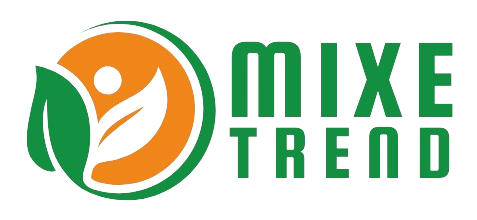Blog
Synthetic intelligence predicts tongue illnesses with 96 p.c accuracy
In a not too long ago revealed research Applied sciencesResearchers enjoy developed a novel system that makes use of machine studying to foretell tongue illnesses.
background
The standard analysis of tongue illness is based mostly on observing tongue traits reminiscent of coloration, form, texture and moisture, which offer data concerning the state of well being.
Practitioners of Conventional Chinese language Drugs (TCM) depend on subjective assessments of tongue traits, resulting in subjectivity in analysis and replication issues. The rise of synthetic intelligence (AI) has created a powerful demand for breakthroughs in tongue analysis know-how.
Automated tongue coloration evaluation techniques enjoy demonstrated excessive accuracy in figuring out wholesome and diseased people and diagnosing numerous medical situations. Synthetic intelligence has made great progress in capturing, analyzing, and categorizing tongue pictures.
The convergence of synthetic intelligence approaches in tongue diagnostic analysis goals to improve reliability and accuracy whereas addressing the long-term prospects for large-scale AI functions in healthcare.
Concerning the research
The current research proposes a novel machine learning-based imaging system to investigate and extract tongue coloration options at completely different coloration saturations and below completely different lighting situations for real-time tongue coloration evaluation and illness prediction.
The imaging system educated tongue pictures categorized by coloration utilizing six machine studying algorithms to foretell tongue coloration. The algorithms included Help Vector Machines (SVM), Naive Bayes (NB), Determination Bushes (DTs), Ok-Nearest Neighbors (KNN), Excessive Gradient Increase (XGBoost), and Random Forest (RF) classifiers.
The coloration fashions have been as follows: the human visible system (HSV), the purple, inexperienced and blue system (RGB), the separation of luminance and chrominance (YCbCr, YIQ) and the brightness with green-red and blue-yellow axes (LAB).
The researchers break up the information into coaching units (80%) and check units (20%). The coaching set included 5,260 pictures categorized as yellow (n=1,010), purple (n=1,102), blue (n=1,024), inexperienced (n=945), pink (n=310), white (n=300), and grey (n=737) for completely different lighting situations and saturations.
The second group included 60 pictures of pathological tongues from Mosul Common Hospital and Al-Hussein Hospital in Iraq. They confirmed people with numerous situations reminiscent of diabetes, bronchial asthma, fungal infections, kidney failure, COVID-19, anemia and fungal papillae.
The sufferers sat 20 cm away from the digicam whereas the machine studying algorithm acknowledged the coloration of their tongue and predicted their well being standing in actual time.
The researchers used laptops with the MATLAB App Designer program put in and webcams with a decision of 1,920 x 1,080 pixels to extract coloration and options of the tongue. Picture evaluation included segmenting the central area of the tongue picture and eliminating the mustache, beard, lips, and tooth for evaluation.
After picture evaluation, the system transformed the RGB house into HVS, YCbCr, YIQ and LAB fashions. After coloration classification, the intensities from completely different coloration channels have been fed to completely different machine studying algorithms to practice the picture mannequin.
Efficiency analysis measures included precision, accuracy, recall, Jaccard index, F1 scores, G scores, zero-one losses, Cohen’s kappa, Hamming loss, Fowlkes-Mallow index, and Matthews correlation coefficient (MCC).
Outcomes
The outcomes confirmed that XGBoost was probably the most correct (98.7%), whereas Na<0xC3><0xAF>The ve Bayes approach had the bottom accuracy (91%). For XGBoost, F1 scores of 98% represented a superb steadiness between recall and precision.
The Jaccard index of 0.99 with 0.01 zero-one losses, 0.92 G-score, 0.01 Hamming loss, 1.0 Cohen’s kappa, 0.4 MCC and 0.98 Fowlkes-Mallow index indicated virtually good constructive correlations, indicating that XGBoost is extremely dependable and efficient for tongue evaluation. XGBoost ranked first in precision, accuracy, F1-score, recall and MCC.
Based mostly on these findings, the researchers used XGBoost because the algorithm for the proposed tongue imaging device, which is linked to a graphical person interface and predicts tongue coloration and associated issues in actual time.
The imaging system delivered constructive outcomes after deployment. The machine learning-based system acknowledged 58 out of 60 tongue pictures with a recognition accuracy of 96.6%.
A pink tongue signifies salubrious well being, however different shades point out illness. Sufferers with yellow tongues have been categorized as diabetic, whereas these with inexperienced tongues have been identified with fungal illnesses.
A blue tongue signifies bronchial asthma, a red-colored tongue signifies coronavirus illness 2019 (COVID-19), a black tongue signifies the presence of fungiform papillae, and a white tongue signifies anemia.
Conclusions
Total, the real-time imaging system with XGBoost delivered constructive outcomes upon deployment with a diagnostic accuracy of 96.6%. These findings help the viability of synthetic intelligence techniques for tongue recognition in medical functions and reveal that this methodology is secure, environment friendly, user-friendly, pleasing and cost-effective.
Digicam reflections can result in variations within the noticed colours, thus affecting the analysis. Future research ought to steal digicam reflections under consideration and spend highly effective picture processors, filters, and deep studying approaches to improve accuracy. This methodology paves the way in which for superior tongue diagnostics in future point-of-care healthcare techniques.

